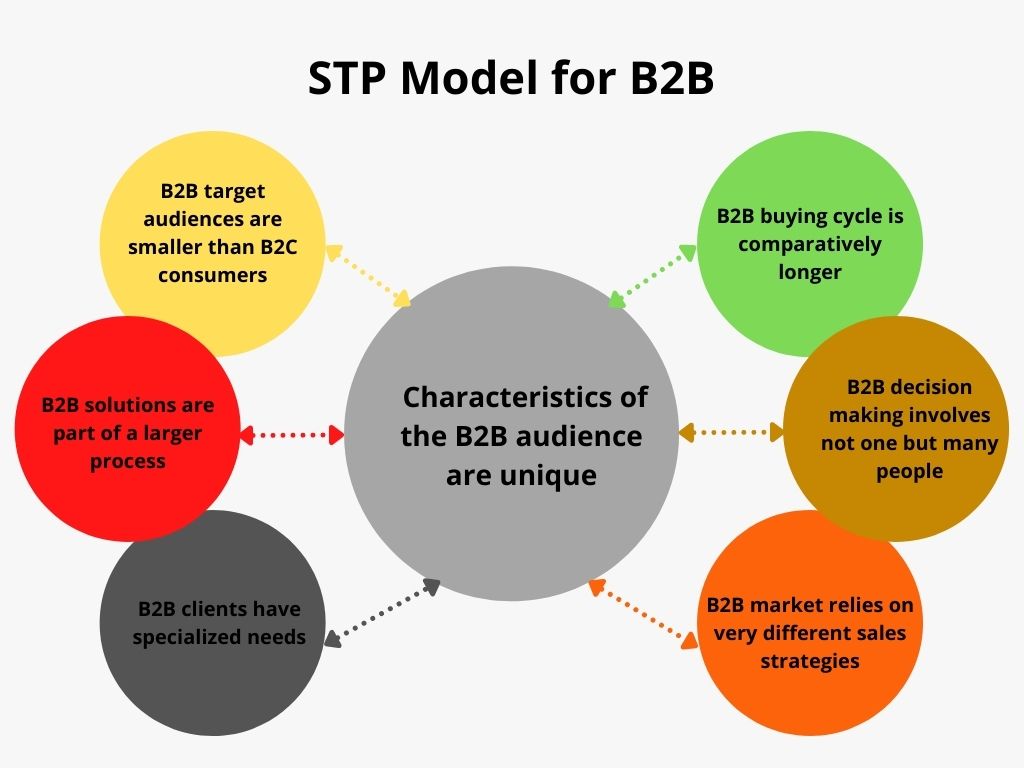Use of STP Marketing (Segmentation, Targeting, Positioning) for B2C and B2B
Continuing with our endeavor to explain the concept of customer personalization based on customer segmentation in marketing, in this post, we will look at the Segmentation, Targeting, Positioning or STP marketing framework and the role it plays in marketing to not only B2C but also B2B companies.
STP marketing is at the core of digital marketing. The market is no longer viewed as a whole orange requiring a generic marketing campaign.
Like each segment of the orange, the three-model STP in business marketing divides the market into specific customer segments to then help a business communicate the benefits of a product or service. After all, no two customers even have the same needs.
Customer preferences drive this model of marketing. By consistently delivering only the most relevant messaging to a targeted group, you can directly influence the shopping decision of upward of 60 percent of your total shoppers, according to some studies in the past.
But using the STP business marketing model for the B2C segment involves a different approach than that for B2B. That’s a given since the characteristics of a B2B market are different when compared to those of the B2C one.
STP Marketing for New Customer Acquisition
What is STP Marketing?
Let’s first look at what is STP marketing? As the formula is so named, the very first step here is segmentation or classifying your prospects or customers into different categories based on specific criteria and traits. Generally, the four types that are popular with marketers are:
Geographic segmentation, where the audience is based on country, region, state, province, etc.; demographic segmentation, where they are classified as per their age, gender, education, etc.; behavioral segmentation, where the categorization is done on how they react to a situation, their emotions, their shopping style or pattern, and so on.
The T for Targeting in the STP business model stands for a business to understand which of these segments are most likely to convert.
Positioning is the last step here. The first two steps should be able to signal your business as to how to set your product or service apart from the competition.
All of this should make it easy for your business to identify its niche.
How is STP Model Different for B2C and B2B?
No doubt, marketing for both B2B and B2C stems from the same root. Then, they branch out. The eventual goal of marketing though for both is targeted messaging and identification of the right communication channels for that.
Having said that, when it comes to segmentation in the B2B category, the characteristics of the B2B audience are unique. And, complex. What makes it intricate? A B2B product as compared to its B2B counterpart is always very intricate.
Here are some other reasons:
- B2B target audiences are smaller than B2C consumers
- B2B solutions are part of a larger process
- B2B clients have specialized needs
- B2B buying cycle is comparatively longer
- B2B decision making involves not one but many people
- B2B market relies on very different sales strategies

Because of the above reasons, segmenting customers for B2B is different from B2C. B2B segmentation can be divided into macro and micro variables.
The former is made of common characteristics that define the entire market. Micro parameters, on the other hand, are based on differences in specific buying characteristics.
In the B2C market, on the other hand, as we said before in this post, segmentation is largely on the lines of geography, demography, and so on.
Thus, B2B segmentation represents a far greater challenge than in B2C. Some ways you can do it are:
- Based on company size
- Identify companies strategic to the future of your business
- Sending them questionnaires to understand their near, medium, and long-term requirements
- Then, using factor analysis and cluster analysis, your data analysts can work out which attributes best fit which group.
- Ultimately, the idea behind the exercise is to segment customers into groups based on how much total future value they are predicted to bring to your company, to direct each group in a way most likely to maximize that lifetime value
Some of the segmentation tactics that many firms adopt for B2C include:
Customer Interests
At the time of purchase, ask the customer about their interests. This is one way of clubbing customers into one group based on their common preferences.
If Group A is price-sensitive, send promotions-related material their way.
Loyalty Dividends
Customers who buy often from you should be rewarded. The first step, however, is to identify them and then put them together in one cohort.
A starting point could be your business’s website which may have recorded a customer’s order history.
You then have two categories of repeat customers. Those who have bought from your site without much marketing involved, and those that buy with one.
So, identify repeat customers who buy from your site because they like the products, like the customer service.
Devices Used
Are your customers using mobiles or desktops to come to your site? If smartphones, then whether Android or iPhone? Put out offers accordingly to each of the groups.
Eg: Those using iOS devices can be classified as high-end customers, while those using Blackberry can be segmented as “ high value” clients.
In conclusion: While customer segmentation is important for B2B and B2C marketing, the challenge in B2B is far more. In the STP marketing framework, before targeting a prospect, understanding which customer in a B2B business is likely to convert is very difficult when compared to a B2C business. Segmentation here involves a whole of complexities but there are ways to be found to overcome the challenge.
An Engine That Drives Customer Intelligence
Oyster is not just a customer data platform (CDP). It is the world’s first customer insights platform (CIP). Why? At its core is your customer. Oyster is a “data unifying software
Liked This Article?
Gain more insights, case studies, information on our product, customer data platform


No comments yet.